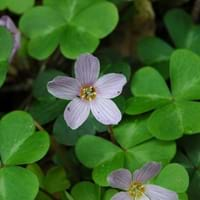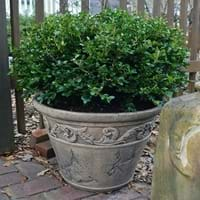Life Span
Perennial
Perennial
Type
Perennial
Broadleaf Evergreen
Origin
Western United States, Canada
China, Korea
Types
not available
Not available
Habitat
Moist woods, Redwood forests
Boggy areas, Swamps
USDA Hardiness Zone
7-9
4-9
AHS Heat Zone
9-1
Not Available
Sunset Zone
4, 5, 6, 7, 8, 9, 14, 15, 16, 17, 18, 19, 20, 21, 22, 23, 24
21,22
Habit
Spreading
Oval or Rounded
Flower Color
White, Purple, Pink, Lavender
Yellow green
Flower Color Modifier
Bicolor
Bicolor
Fruit Color
Not Available
Not Available
Leaf Color in Spring
Green
Green, Dark Green
Leaf Color in Summer
Green
Dark Green
Leaf Color in Fall
Green
Dark Green
Leaf Color in Winter
Light Green
Dark Green
Leaf Shape
Heart-shaped
Pinnate
Plant Season
Spring, Summer, Fall, Winter
Spring, Summer, Fall, Winter
Sunlight
Partial Sun, Partial shade, Full Shade
Full Sun, Partial Sun
Growth Rate
Very Fast
Slow
Type of Soil
Loam
Loam, Sand
The pH of Soil
Acidic, Neutral
Acidic, Neutral
Soil Drainage
Average
Well drained
Bloom Time
Early Spring, Spring, Late Spring, Early Summer, Summer, Late Summer, Early Fall, Fall
Late Spring
Tolerances
Drought
Not Available
Where to Plant?
Container, Ground, Pot
Container, Ground, Pot
How to Plant?
Divison, Seedlings
Cuttings, Seedlings
Plant Maintenance
Low
Medium
Watering Requirements
Average Water Needs, Medium
Keep ground moist, Keep the Soil well drained, Requires regular watering
In Summer
Ample Water
Lots of watering
In Spring
Adequately
Moderate
In Winter
Moderate
Average Water
Soil pH
Acidic, Neutral
Acidic, Neutral
Soil Type
Loam
Loam, Sand
Soil Drainage Capacity
Average
Well drained
Sun Exposure
Partial Sun, Partial shade, Full Shade
Full Sun, Partial Sun
Pruning
Remove damaged leaves, Remove dead branches, Remove dead leaves
Prune back the growing tips, Prune to stimulate growth, Remove damaged leaves, Remove dead branches, Remove dead leaves
Fertilizers
All-Purpose Liquid Fertilizer
10-10-10 diluted liquid fertilizer, Any balanced general purpose fertilizer
Pests and Diseases
Red blotch
Leafminer, Mites, Nematodes, Psyllids
Plant Tolerance
Drought
Drought
Flowers
Yes
Insignificant
Flower Petal Number
Single
Single
Foliage Texture
Medium
Fine
Foliage Sheen
Matte
Glossy
Attracts
Not Available
Flying insects, Insects
Allergy
Not Available
Itchiness, Skin irritation
Aesthetic Uses
Ground Cover
Bonsai, Decorating walls, Landscape Designing, Mass in beds, Mixed Border, Showy Purposes, Used for decorating walls, fences, gates, hedges, etc., Used for making hedges
Beauty Benefits
Not Available
Not Available
Environmental Uses
Air purification, Provides ground cover
Air purification, Food for animals, Food for birds
Medicinal Uses
Antirheumatic, Boils, Opthalmic, Rheumatism, Sore Eyes, Swelling
Not Available
Part of Plant Used
Flowers, Leaves
Not Available
Other Uses
Culinary use, Employed in herbal medicine, Used As Food, Used for fragrance
Used as Ornamental plant, Used for Landscaping
Used As Indoor Plant
No
No
Used As Outdoor Plant
Yes
Yes
Garden Design
Groundcover, Wildflower
Container, Edging, Foundation, Hedges, Rock Garden, Wall
Botanical Name
OXALIS oregana
Buxus microphylla
Common Name
Redwood Sorrel
Korean boxwood
In Hindi
Redwood Sorrel
Korean Boxwood
In German
Redwood Sorrel
Koreanisch Boxwood
In French
Redwood Sorrel
Boxwood coréenne
In Spanish
Redwood alazán
Buxus microphylla
In Greek
Redwood Sorrel
Κορέας Πυξάρι
In Portuguese
Redwood Sorrel
Boxwood coreana
In Polish
Redwood szczaw
Koreański Bukszpan
In Latin
Rumex Redwood
Korean Boxwood
Phylum
Magnoliophyta
Tracheophyta
Class
Magnoliopsida
Magnoliopsida
Family
Oxalidaceae
Buxaceae
Clade
Angiosperms, Eudicots, Rosids
Angiosperms, Eudicots
Tribe
Not Available
Not Available
Subfamily
Not Available
Not Available
Number of Species
Not Available
Season and Care of Redwood Sorrel and Korean Boxwood
Season and care of Redwood Sorrel and Korean Boxwood is important to know. While considering everything about Redwood Sorrel and Korean Boxwood Care, growing season is an essential factor. Redwood Sorrel season is Spring, Summer, Fall and Winter and Korean Boxwood season is Spring, Summer, Fall and Winter. The type of soil for Redwood Sorrel is Loam and for Korean Boxwood is Loam, Sand while the PH of soil for Redwood Sorrel is Acidic, Neutral and for Korean Boxwood is Acidic, Neutral.
Redwood Sorrel and Korean Boxwood Physical Information
Redwood Sorrel and Korean Boxwood physical information is very important for comparison. Redwood Sorrel height is 10.20 cm and width 30.00 cm whereas Korean Boxwood height is 120.00 cm and width 90.00 cm. The color specification of Redwood Sorrel and Korean Boxwood are as follows:
Redwood Sorrel flower color: White, Purple, Pink and Lavender
Redwood Sorrel leaf color: Green
Korean Boxwood flower color: Yellow green
- Korean Boxwood leaf color: Green and Dark Green
Care of Redwood Sorrel and Korean Boxwood
Care of Redwood Sorrel and Korean Boxwood include pruning, fertilizers, watering etc. Redwood Sorrel pruning is done Remove damaged leaves, Remove dead branches and Remove dead leaves and Korean Boxwood pruning is done Prune back the growing tips, Prune to stimulate growth, Remove damaged leaves, Remove dead branches and Remove dead leaves. In summer Redwood Sorrel needs Ample Water and in winter, it needs Moderate. Whereas, in summer Korean Boxwood needs Lots of watering and in winter, it needs Average Water.





